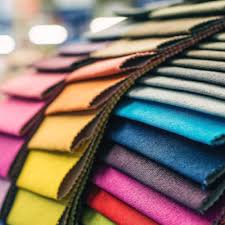Mini Sheet: Traditional Colors of Japan (Series III) (Japan 2019)
Traditional Colors of Japan (Series III) (Japan 2019)
06 November (Japan ) within release Traditional Colors of Japan (Series III) (2019) goes into circulation Mini Sheet Traditional Colors of Japan (Series III) face value 10*84 Japanese yen
| Mini Sheet Traditional Colors of Japan (Series III) in catalogues | |
|---|---|
| Colnect codes: | Col: JP 2019-44B |
Mini Sheet is square format.
stamp from mini-sheetAlso in the issue Traditional Colors of Japan (Series III) (2019):
- Stamp - Turkeys face value 63;
- Stamp - Birds face value 63;
- Stamp - Traditional Bamboo Instrument face value 84;
- Stamp - Igloo face value 84;
- Stamp - Comb and Hair Pick face value 84;
- Stamp - Orange face value 63;
- Stamp - Mount Fuji face value 84;
- Stamp - Plants face value 63;
- Stamp - Toy Cat face value 63;
- Stamp - Holly face value 63;
- Stamp - Food face value 84;
- Stamp - Lobster face value 63;
- Stamp - Bowl of Food face value 84;
- Stamp - Salmon face value 63;
- Mini Sheet - Traditional Colors of Japan (Series III) face value 10*63;
- Stamp - Cloth and Needles face value 84;
- Stamp - Mice Eating Cheese face value 63;
- Stamp - Teapot face value 63;
- Stamp - Cherry Blossoms face value 84;
- Mini Sheet - Traditional Colors of Japan (Series III) face value 10*84;
- Stamp - Traditional Colors of Japan face value 84;
- Stamp - Plants face value 84;
Mini Sheet Traditional Colors of Japan (Series III) it reflects the thematic directions:
A flower, sometimes known as a bloom or blossom, is the reproductive structure found in plants that are floral (plants of the division Magnoliophyta, also called angiosperms). The biological function of a flower is to effect reproduction, usually by providing a mechanism for the union of sperm with eggs. Flowers may facilitate outcrossing (fusion of sperm and eggs from different individuals in a population) or allow selfing (fusion of sperm and egg from the same flower). Some flowers produce diaspores without fertilization (parthenocarpy). Flowers contain sporangia and are the site where gametophytes develop. Many flowers have evolved to be attractive to animals, so as to cause them to be vectors for the transfer of pollen. After fertilization, the ovary of the flower develops into fruit containing seeds. In addition to facilitating the reproduction of flowering plants, flowers have long been admired and used by humans to beautify their environment, and also as objects of romance, ritual, religion, medicine and as a source of food.
Food is any substance consumed by an organism for nutritional support. Food is usually of plant, animal, or fungal origin and contains essential nutrients such as carbohydrates, fats, proteins, vitamins, or minerals. The substance is ingested by an organism and assimilated by the organism's cells to provide energy, maintain life, or stimulate growth. Different species of animals have different feeding behaviours that satisfy the needs of their metabolisms and have evolved to fill a specific ecological niche within specific geographical contexts.
A musical instrument is a device created or adapted to make musical sounds. In principle, any object that produces sound can be considered a musical instrument—it is through purpose that the object becomes a musical instrument. A person who plays a musical instrument is known as an instrumentalist. The history of musical instruments dates to the beginnings of human culture. Early musical instruments may have been used for rituals, such as a horn to signal success on the hunt, or a drum in a religious ceremony. Cultures eventually developed composition and performance of melodies for entertainment. Musical instruments evolved in step with changing applications and technologies.
Flora is the plant life occurring in a particular region or time, generally the naturally occurring or indigenous—native plant life. The corresponding term for animal life is fauna. Flora, fauna and other forms of life such as fungi are collectively referred to as biota. Sometimes bacteria and fungi are also referred to as flora, as in the terms gut flora or skin flora.
Snow comprises individual ice crystals that grow while suspended in the atmosphere—usually within clouds—and then fall, accumulating on the ground where they undergo further changes. It consists of frozen crystalline water throughout its life cycle, starting when, under suitable conditions, the ice crystals form in the atmosphere, increase to millimeter size, precipitate and accumulate on surfaces, then metamorphose in place, and ultimately melt, slide or sublimate away.
Textile is an umbrella term that includes various fiber-based materials, including fibers, yarns, filaments, threads, and different types of fabric. At first, the word "textiles" only referred to woven fabrics.However, weaving is not the only manufacturing method, and many other methods were later developed to form textile structures based on their intended use. Knitting and non-woven are other popular types of fabric manufacturing. In the contemporary world, textiles satisfy the material needs for versatile applications, from simple daily clothing to bulletproof jackets, spacesuits, and doctor's gowns





